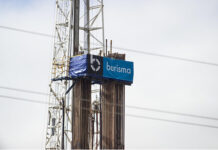
Danny Casolaro’s Death in August 1991 Was Ruled a Suicide But Overwhelming Evidence Indicates That He Was Murdered—Likely by Rogue Elements of the CIA in Collaboration with the Kuwaiti Royal Family
When a housekeeper at the Martinsburg, West Virginia, Sheraton Hotel entered Room 517 on the morning of August 10, 1991, she found journalist Danny Casolaro of Fairfax, Virginia, lying dead in a tub of bloody water.
Casolaro’s wrists were slashed twelve times with one of the cuts being so deep that it severed a tendon. Within 24 hours, Casolaro’s body was embalmed—without authorization from his family, which was only notified of his death two days afterwards.
The death was ruled a suicide, which his family knew to be untrue.
Described as an “upbeat, golden-haired Gatsby-esque romantic who loved to quote poetry, raised Arabian horses, and was adored by women,” Casolaro had been on the verge of breaking a major story that would expose deep-level corruption among a cabal in the CIA linked to then-President George H. W. Bush.
This cabal included the major players in the Iran-Contra scandal involving illegal arms smuggling to counter-revolutionaries (Contras) in Nicaragua.

Their criminal activity extended into drug trafficking, money laundering, and acts of international terrorism, carried out in collaboration with the Gambino and other crime families.
Thirty-two years after Casolaro’s death, his son Trey is calling for the reopening of the case and reclassification of his death as a murder.
Trey told CovertAction Magazine that he was 22 years old and living in Colorado when his father was killed.
He said that the day before his father was found dead, he made a collect call to his dad who told him about the research that he had been undertaking. He told Trey that he was meeting a guy from Iraq in Martinsburg, and also meeting with someone who worked for the Defense Department.
Unfortunately, that was the last time that Trey would speak to his father.
The forensic evidence points very clearly to Danny being murdered. The razor-blade cuts were too deep on both arms for a suicide, particularly for a man squeamish about blood.

There was one bruise on Casolaro’s arm and another on his head that were never accounted for and signs that an assailant had tried to asphyxiate him.
Three of Casolaro’s fingernails were missing, and a housekeeper saw two bloody towels, which indicated that blood had been cleaned up by someone else.
According to confidential sources Casolaro had been found with Ethyl Alcohol, Absolute, in his system that had been injected into his spine to “deaden the nerves below his head.”
An unnamed Sheraton Hotel maid told the Martinsburg police she saw a man leaving Casolaro’s room the morning of his death.
Down to the sports clothes the maid said he was wearing, the man resembled Major Joseph Cuellar, a CIA and Special Forces operative who worked at Business Risks International, a private security company functioning as a CIA front.
In the days before his death, Casolaro had received death threats and been warned by intelligence professionals that he was in over his head and that his life was in danger. Strangers in military uniforms appeared at his funeral. Casolaro had told his brother, “if anything happens to me, don’t believe it was an accident.”

After his death Danny’s car was found empty at the hotel car park when it had previously been stacked with papers from his investigation. A briefcase, bag and two envelopes in his possession were missing.
The briefcase was filled with incriminating, highly classified documents delivered to Casolaro in Martinsburg the day before his death by William Turner, a former Hughes Aircraft employee. The briefcase has never been accounted for.
Turner stated the documents included “computer printouts and other documents [Casolaro had] received from un-named sources and from Alan Standorf [a National Secrutiy Agency (NSA) employee who was found beaten to death in the back seat of his car in a parking lot at Washington National Airport in January 1991] and documents relating to the sale of modified PROMIS [Prosecution Management Information System] software…to Canada, Australia and Israel.”

The PROMIS software had been developed by a former NSA staffer named Bill Hamilton and his wife Nancy to help law enforcement agencies collect money and to track criminals.
The Hamiltons’ company, Institute for Law and Social Research (INSLAW), was forced into bankruptcy and seized in the early 1980s by officials in the Justice Department working under then-Attorney General Edwin Meese.
Meese provided the PROMIS software to the CIA and foreign intelligence services so they could track wire transfers from banks, move black funds more easily, and enhance surveillance operations.

The software modifications were undertaken by Michael Riconosciuto who was working for Wackenhut, a CIA-front corporation at the Cabazon Indian Reservation in Riverside County, California, from where arms were smuggled to the Nicaraguan Contras, the right-wing group mobilized by the CIA to fight the left-wing Sandinistas, which overthrew the U.S.-backed Somoza dictatorship in 1979.
Riconosciuto testified in U.S. federal court that the PROMIS software was modified for covert SWIFT Banking and it was installed at Transaction Technologies, Inc., a subsidiary of Citibank. Riconosciuto also testified that the modified PROMIS software was renamed the “LEAN” software and was sold to Australia.

Further modifications were undertaken by Hadron, Inc,, owned by Dr. Earl Brian, a veteran of the Phoenix Program in Vietnam and former California Secretary of Health Care Services, who was involved in the “October Surprise” where the Reagan campaign paid the Iranians to delay the release of American hostages during the 1980 election to make incumbent Jimmy Carter look bad and help Reagan win the White House.
Investigative authors James Ridgeway and Doug Vaughan revealed that the mysterious Robert Booth Nichols, known by the FBI and the Australian Federal Police to be associated with the CIA and the Gambino crime family, had returned from Kuwait to assist Casolaro with his investigations into the PROMIS software and monitor what he was uncovering.
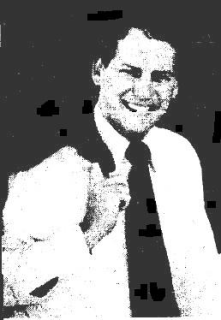
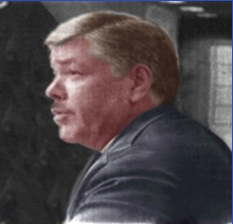
Nichols owned Meridian International Logistics and had negotiated the sale of his G77 machine guns to the Kuwait government. Nichols told Casolaro that he was assisting the Kuwaiti royal family to recover gold bullion and art artifacts that had been stolen by Saddam Hussein’s forces when invading Kuwait.
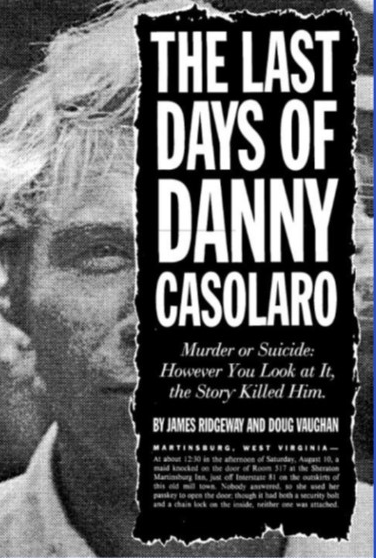

Nichols was a also a director of FIDCO with Robert Maheu, George Pender and Clint Murchison, Jr., who had previously employed CIA asset Robert Sensi for intelligence operations in Angola.
A month before Casolaro’s death, Casolaro met CIA operative Theodore Shackley’s girlfriend at a party—obviously not by coincidence—and caught her going through his research files when she went to his home.
Theodore Shackley was the former CIA station chief in Saigon who coordinated the Phoenix Program, which resulted in the murders of 40,000 suspected Vietcong insurgents. Shackley had also run drugs in Laos with General Vang Pao and coordinated anti-Castro terrorist operations in Cuba during the Bay of Pigs landing.
When Shackley was fired from the CIA during the Carter administration, George H. W. Bush helped him set up private security companies, among them TGS International and Research Associates International, that received lucrative military and intelligence contracts with the Kuwaiti royal family, a key U.S. proxy in the Middle East which played a crucial role in the Iran-Contra affair.
Casolaro had in his briefcase copies of two checks—for $1 million and $4 million—made out by members of the Kuwaiti royal family to arms dealers Adnan Khashoggi and Manucher Ghorbanifar through the Monte Carlo branch of the Bank of Credit and Commerce International (BCCI) for the purchase of TOW missiles from Iran.




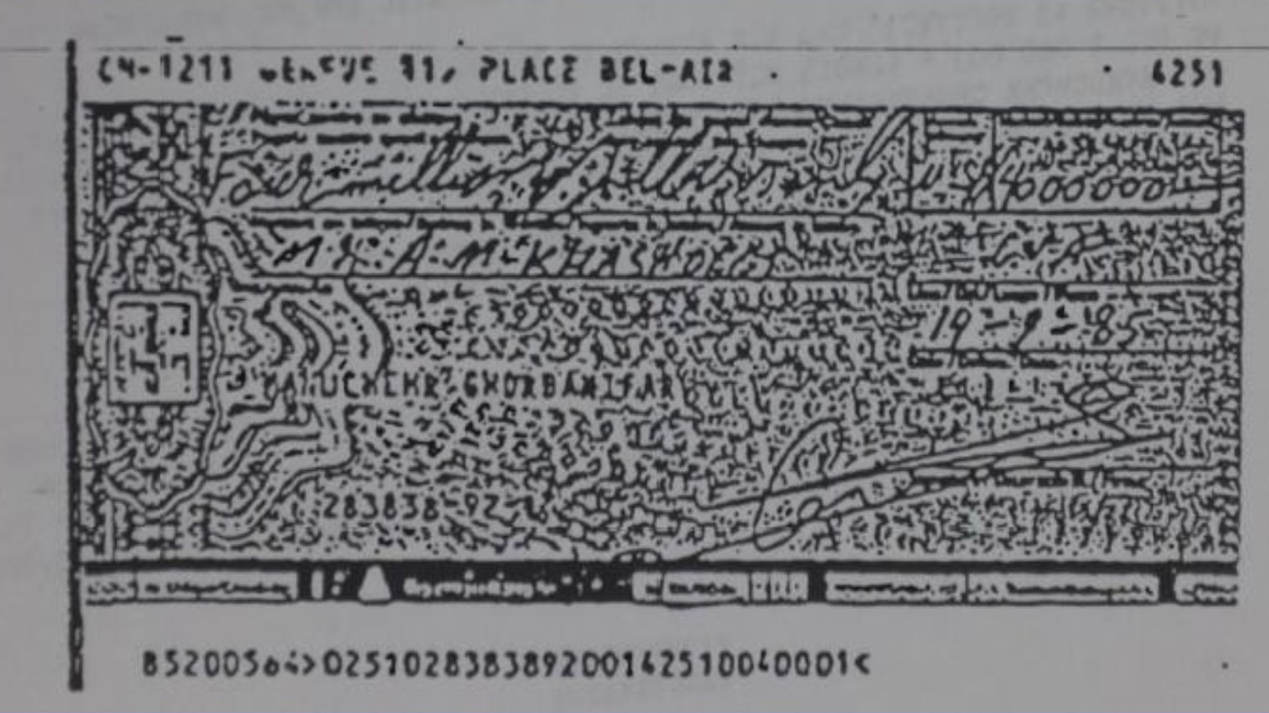

Casolaro’s best friend, Ben Mason, stated that Casolaro had shown him the copies of the BCCI checks and the Monte Carlo transaction records that he had in his possession. Ben believes that Casolaro was murdered during his trip to Martinsburg.
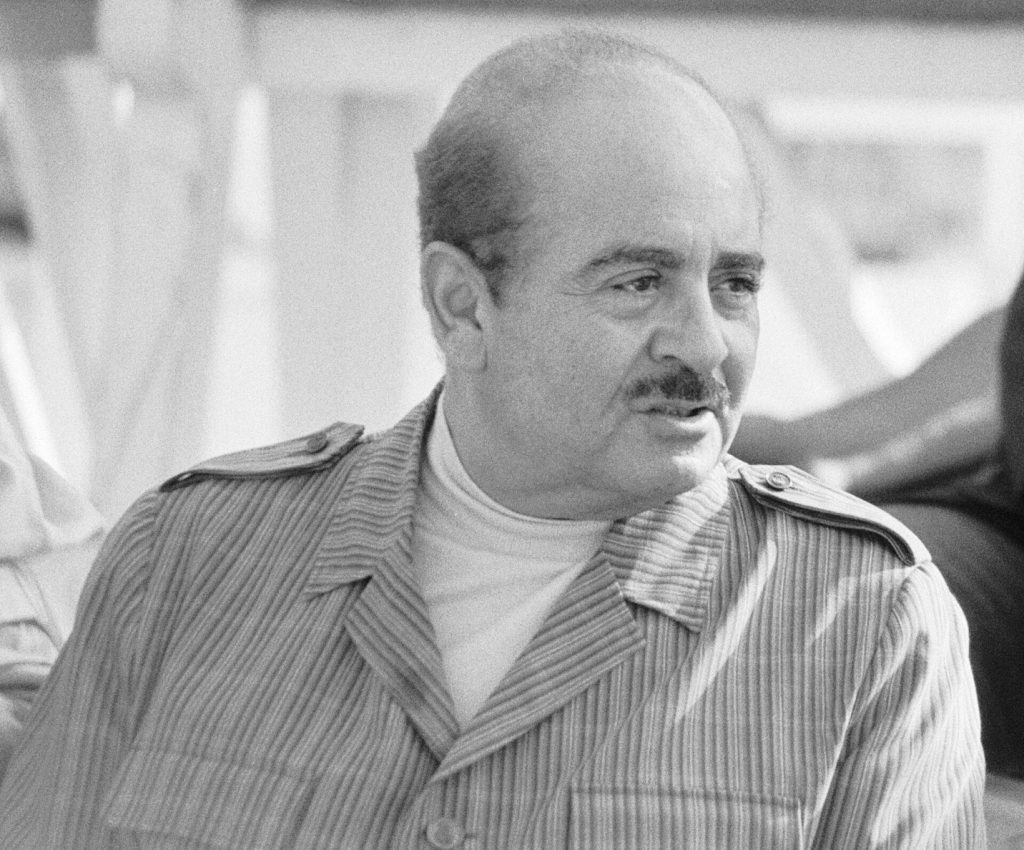

The TOW missiles purchased by the Kuwaiti royal family through BCCI were sent to Iran and the profits were used to purchase arms that were sent to Nicaraguan Contras in violation of the 1984 Boland Amendment forbidding U.S. military support to the Contras who had carried out terrorist acts inside Nicaragua.
Theodore Shackley at the time was negotiating the deal with Khashoggi and Ghorbanifar along with other rogue CIA officers known as the “secret team” who helped coordinate the Iran-Contra drugs and arms smuggling operations. Members of the secret team included Oliver North, Richard Armitage, Michael Ledeen and Richard Secord, the latter of whom was in contact with Danny Casolaro.

Richard Secord [Source: af.mil]

The funds from the checks for the TOW missiles were transferred by Robert Sensi, who worked for the secret owner of BCCI and former Kuwait Airways Chairman Faisal Saud Al-Fulaij, and worked directly also for CIA Director William Casey as a CIA asset.

Sensi also worked for William Wilson, U.S. Ambassador to the Vatican, and Robert Gray, Chairman of Hill & Knowlton representing the Kuwait Government and the Nicaraguan Contras.[1]

Casolaro’s last girlfriend, Wendy Golden, was invited by the Crown Prince of Kuwait while Casolaro was in Martinsburg to spend one week at the Watergate Hotel, where Robert Sensi worked in the Kuwait Embassy.




Golden was never interviewed by the Martinsburg police or FBI, which reaffirmed the suicide ruling based on the spurious reasoning that Casolaro had brought a shoelace with him to Martinsburg—supposedly to hang himself—while leaving a suicide note that Trey believes was fabricated.
At the time of Casolaro’s death, Senator John Kerry (D-MA), Chair of the Subcommittee on Terrorism, Narcotics and International Operations of the U.S. Senate Committee on Foreign Relations, was heading an investigation into BCCI, which laundered funds for the CIA and organized crime networks.
Kerry was demanding that attorney Robert Altman provide copies of all BCCI payments made to Khashoggi and Ghorbanifar through the Monte Carlo branch, the same checks and transaction records Casolaro had in his possession, which would have opened his investigation and put powerful people in jail.

When asked by Australian physicist and researcher Peter Osborne if he knew journalist Danny Casolaro, Jack Blum, Chief Investigator for the Kerry Subcommittee, denied knowing him. Blum was incensed that Osborne had his personal phone number that was in Casolaro’s notebook and that Osborne knew of the checks to Khashoggi and Ghorbanifar.
Blum told Osborne that knowledge of the checks was “top secret” and questioned Osborne on how he had obtained this information. Osborne replied that he had the phone records confirming that Casolaro and Blum had spoken twice and that copies of the checks were in Casolaro’s possession.
Osborne asked Blum if he thought that Danny was in danger having copies of the signed BCCI checks with him in Martinsburg, to which Blum replied, “if Danny was down in Virginia, in CIA territory and waving all those checks around, what did he think would happen?”—implying that he would be killed.
Osborne told CovertAction Magazine that it was obvious that Blum cared more about the fact he was “holding copies of top-secret records than the life of Casolaro.”
According to William Turner, Robert A. Altman, a BCCI attorney who had power of attorney to represent Faisal Saud Al-Fulaij, had reluctantly agreed to meet with Casolaro in Martinsburg because Casolaro was threatening to give the checks to Senator Kerry’s investigation along with two folders of documents exposing a Pentagon fraud involving Hughes Aircraft.
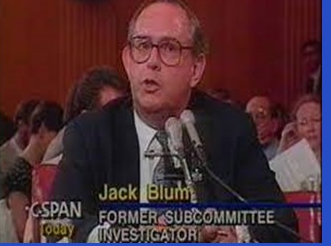


Ten days before the death of Casolaro, Robert Altman and Faisal Saud Al-Fulaij were indicted and charged for helping BCCI hide its illegal ownership of Washington’s largest bank and taking bribes. Fulaij was identified to be not only a secret owner of BCCI, but also Attock Oil and Capcom, which moved billions of dollars for one of Capcom’s most notorious clients, Panamanian General Manuel Antonio Noriega.

The complex series of transactions involving Noriega, BCCI and Capcom provide an illustration of textbook money laundering.
The CIA did not tell the Federal Reserve that Saudi intelligence chief Kamal Adham, another player in the Iran-Contra affair, and Faisal Al-Fulaij were foreign intelligence liaisons of the U.S., nor did it advise the Federal Reserve that both Adham and Al-Fulaij had been the subjects of a Securities and Exchange Commission (SEC) probe in connection with violations of the Foreign Corrupt Practices Act by Boeing and Lockheed for arms sales to Saudi Arabia.


It is unclear if the meeting in Martinsburg with Altman ever took place or if Casolaro was killed first.
A waitress at a restaurant gave a detailed description to police of Casolaro meeting with an Arab man who was rude to the waitress. This man was likely the Iraqi about whom Casolaro had told his son Trey.
Peter Osborne believes that his name was Samir Najmeddin, an Iraqi businessman who supplied arms to Saddam Hussein and Argentina involving BCCI, and Mossad agent Solomon Schwartz, a CIA asset working with Robert Gray, Ted Shackley and Earl Brian.
Casolaro was hot on the trail of illegal sales of chemical weapons to Iraqi leader Saddam Hussein by members of the “secret team” who helped their friends make billions from construction and oil contracts after the first Persian Gulf War, for which the Kuwaitis had helped lobby.
A lot of what we know now about Casolaro’s research into what he called “The Octopus,” or CIA-organized crime networks, has resulted from a 21-year investigation carried out by Osborne, who was science adviser to the Australian Federal Liberal Party in 1995.
Osborne began researching Casolaro’s murder after his encryption business venture established with the Australian Federal Government and United Nations was destroyed by CIA Operation StillPoint (that uses the PROMIS SWIFT banking software for covert money laundering) and a bogus prince appearing in Australia announcing a $1.3 billion donation to the venture, because it had an encryption key that the NSA—which set up a major ECHELON spy base in Australia at Pine Gap—could not infiltrate.

Osborne has developed a webpage dedicated to the memory of Casolaro and a podcast series that offers a treasure trove of information on Casolaro and the corruption in the CIA and government that Casolaro was helping to expose.
Osborne said Assistant U.S. Attorney Steven Zipperstein and FBI Special Agent Scott Erskine had full access to all of Casolaro’s research folders containing the copies of the BCCI checks and the Monte Carlo transaction records—the smoking gun. Yet they concluded in their investigation into the death of Casolaro that there was no evidence of any threats or motive to kill Casolaro.
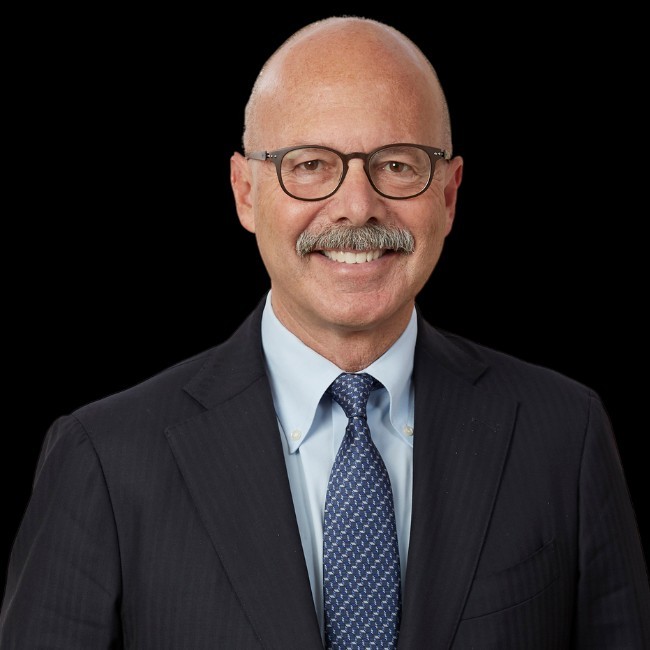
Osborne said “This evidence should have been reported on the front pages of all newspapers and prompted a murder investigation not a suicide investigation.” Blum confirmed to Osborne that the Martinsburg police, FBI and U.S. Department of Justice never provided Casolaro’s BCCI evidence to the Senate Foreign Relations Committee’s Select Committee on Terrorism and Narcotics.
Osborne told CovertAction Magazine that, along with Trey, he hopes that the investigation into Casolaro’s death will be re-opened and that Casolaro is recognized for his research work.
“Casolaro was a wonderful investigator who was linking all the major scandals of the 1980s—PROMIS software, Iran-Contra, BCCI, October Surprise, Nugan Hand Bank, Iraq-Gate, Bombing of Pan Am Flight 103 and others—together,” Osborne said. “He was ahead of all other journalists and died for it. He deserves to be honored and to receive a prestigious journalistic prize.”

-
Hill & Knowlton represented a group called Citizens for a Free Kuwait and offered as a witness to the congressional human rights caucus the 15-year-old daughter of the Kuwaiti ambassador to the U.S. who, in emotional testimony, falsely claimed that Iraqi troops were ripping babies from their incubators. This testimony was used to build public support for the 1991 Operation Desert Storm, which ushered in a quarter-century of U.S. warfare on Iraq and resulted in the deaths of more than 100,000 Iraqis. ↑
CovertAction Magazine is made possible by subscriptions, orders and donations from readers like you.
Blow the Whistle on U.S. Imperialism
Click the whistle and donate
When you donate to CovertAction Magazine, you are supporting investigative journalism. Your contributions go directly to supporting the development, production, editing, and dissemination of the Magazine.
CovertAction Magazine does not receive corporate or government sponsorship. Yet, we hold a steadfast commitment to providing compensation for writers, editorial and technical support. Your support helps facilitate this compensation as well as increase the caliber of this work.
Please make a donation by clicking on the donate logo above and enter the amount and your credit or debit card information.
CovertAction Institute, Inc. (CAI) is a 501(c)(3) non-profit organization and your gift is tax-deductible for federal income purposes. CAI’s tax-exempt ID number is 87-2461683.
We sincerely thank you for your support.
Disclaimer: The contents of this article are the sole responsibility of the author(s). CovertAction Institute, Inc. (CAI), including its Board of Directors (BD), Editorial Board (EB), Advisory Board (AB), staff, volunteers and its projects (including CovertAction Magazine) are not responsible for any inaccurate or incorrect statement in this article. This article also does not necessarily represent the views the BD, the EB, the AB, staff, volunteers, or any members of its projects.
Differing viewpoints: CAM publishes articles with differing viewpoints in an effort to nurture vibrant debate and thoughtful critical analysis. Feel free to comment on the articles in the comment section and/or send your letters to the Editors, which we will publish in the Letters column.
Copyrighted Material: This web site may contain copyrighted material the use of which has not always been specifically authorized by the copyright owner. As a not-for-profit charitable organization incorporated in the State of New York, we are making such material available in an effort to advance the understanding of humanity’s problems and hopefully to help find solutions for those problems. We believe this constitutes a ‘fair use’ of any such copyrighted material as provided for in section 107 of the US Copyright Law. You can read more about ‘fair use’ and US Copyright Law at the Legal Information Institute of Cornell Law School.
Republishing: CovertAction Magazine (CAM) grants permission to cross-post CAM articles on not-for-profit community internet sites as long as the source is acknowledged together with a hyperlink to the original CovertAction Magazine article. Also, kindly let us know at info@CovertActionMagazine.com. For publication of CAM articles in print or other forms including commercial internet sites, contact: info@CovertActionMagazine.com.
By using this site, you agree to these terms above.
About the Author

Jeremy Kuzmarov holds a Ph.D. in American history from Brandeis University and has taught at numerous colleges across the United States. He is regularly sought out as an expert on U.S. history and politics for radio and TV programs and co-hosts a radio show on New York Public Radio and on Progressive Radio News Network called “Uncontrolled Opposition.”
He is Managing Editor of CovertAction Magazine and is the author of six books on U.S. foreign policy, including Obama’s Unending Wars (Clarity Press, 2019), The Russians Are Coming, Again, with John Marciano (Monthly Review Press, 2018), Warmonger. How Clinton’s Malign Foreign Policy Launched the U.S. Trajectory From Bush II to Biden (Clarity Press, 2023); and with Dan Kovalik, Syria: Anatomy of Regime Change (Baraka Books, 2025).
Besides these books, Kuzmarov has published hundreds of articles and contributed to numerous edited volumes, including one in the prestigious Oxford History of Counterinsurgency .
He can be reached at jkuzmarov2@gmail.com and found on substack here.









